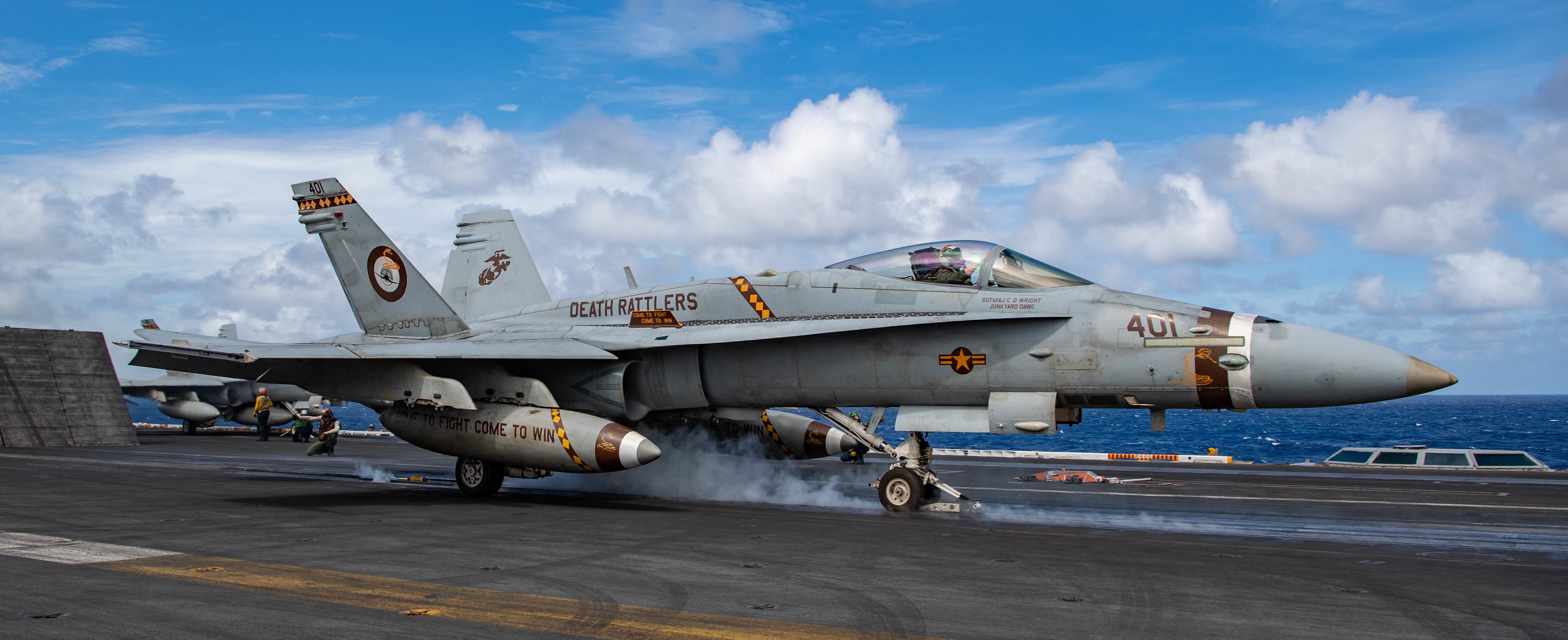The first helicopters of a Hawaii-based CH-53E squadron were transported off the island as the unit prepares to divest itself of aircraft and decommission over the next year as part of the Marine Corps’ force redesign.
Two of the 10 CH-53E Super Stallions in Marine Heavy Helicopter Squadron 463 were transported off Hawaii by the U.S. Air Force 517th Airlift Squadron on March 4, according to Stars and Stripes.
The remaining eight aircraft are slated to leave the unit by or before Oct. 1, Marine officials told Stripes.
RELATED

Another Hawaii-based aviation unit, the Light Attack Helicopter Squadron 367, also is slated for decommissioning as part of force redesign. The squadron uses the AH-1Z Viper and UH-1Y Venom helicopters.
Squadron 367 only recently transitioned from legacy AH-1W Super Cobra helicopters to the AH-1Z Viper, the newest variant, with a final Super Cobra flight in 2018, according to a U.S. Indo-Pacific Command statement at the time.
Both units are part of the Marine Aircraft Group 24, which also includes Marine Aviation Logistics Squadron 24, Marine Wing Support Detachment 24, Marine Medium Tiltrotor Squadrons 268 and 363 and Marine Unmanned Aerial Vehicle Squadron 3.
In addition to the two Hawaii-based squadrons, plans announced in 2020 call for the Corps to add six MQ-9 drones to its arsenal and deactivate the following squadrons:
• Marine Light Attack Helicopter Squadron 469 at Marine Corps Air Station Camp Pendleton, California.
• Marine Medium Tiltrotor Squadron 264 at MCAS New River, North Carolina, and one of the 19 MV-22B squadrons.
• Marine Heavy Helicopter Squadron 462 at MCAS Miramar, California.
MAG 24 will add a KC-130 cargo plane squadron after the deactivations of the two helicopter units, officials said.
The aviation shakeup will likely also see more unmanned aerial drones in the mix for Marine aviators, especially in the Pacific.
One year ago, Marine Corps Combat Development Command announced Commandant Gen. David Berger’s force redesign to meet challenges in the Pacific.
That move saw the shedding of all tanks, an ongoing move to longer-range missiles over conventional, tubed artillery.
But another portion of the overhaul that didn’t grab as much attention was the shift in aviation.
The move has plans to “double the number of UAS squadrons and austere lethal unmanned air and ground systems, enhancing our ability to sense and strike,” MCCDC said.
Todd South has written about crime, courts, government and the military for multiple publications since 2004 and was named a 2014 Pulitzer finalist for a co-written project on witness intimidation. Todd is a Marine veteran of the Iraq War.





